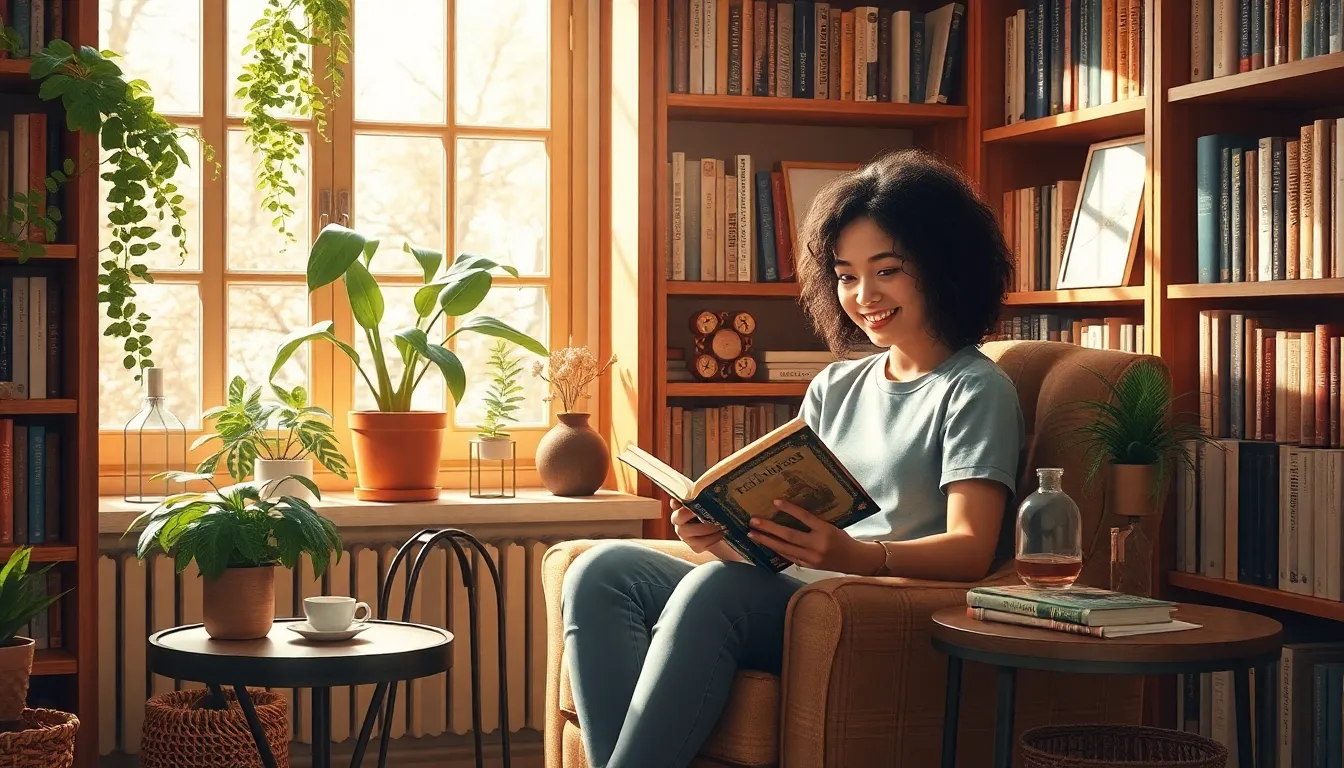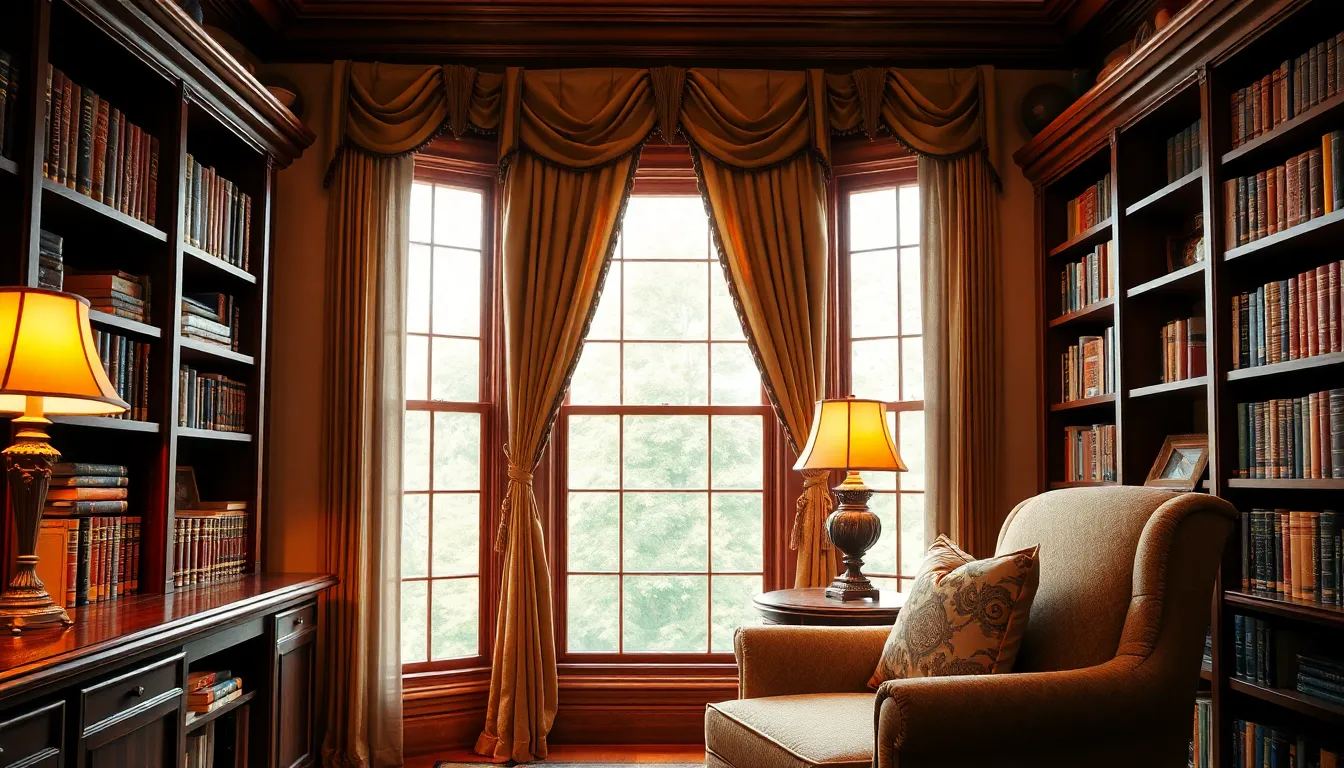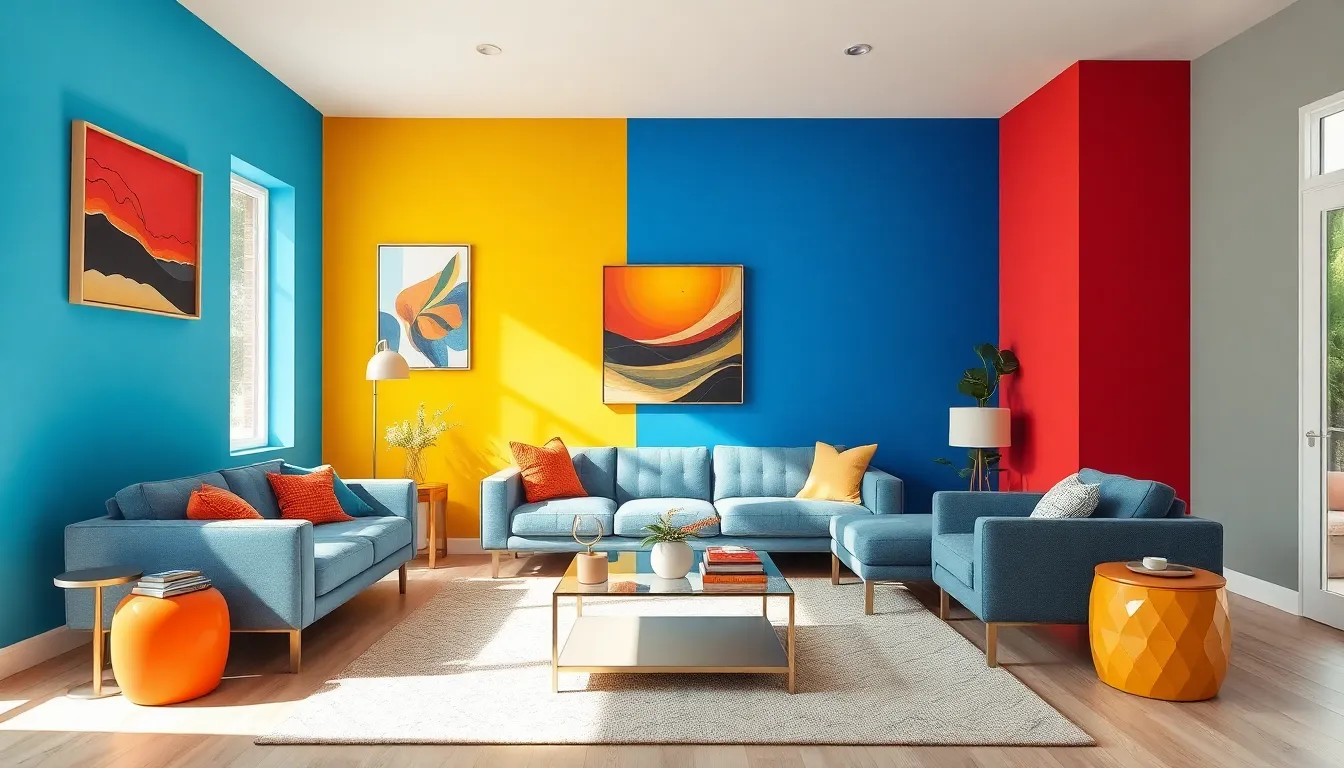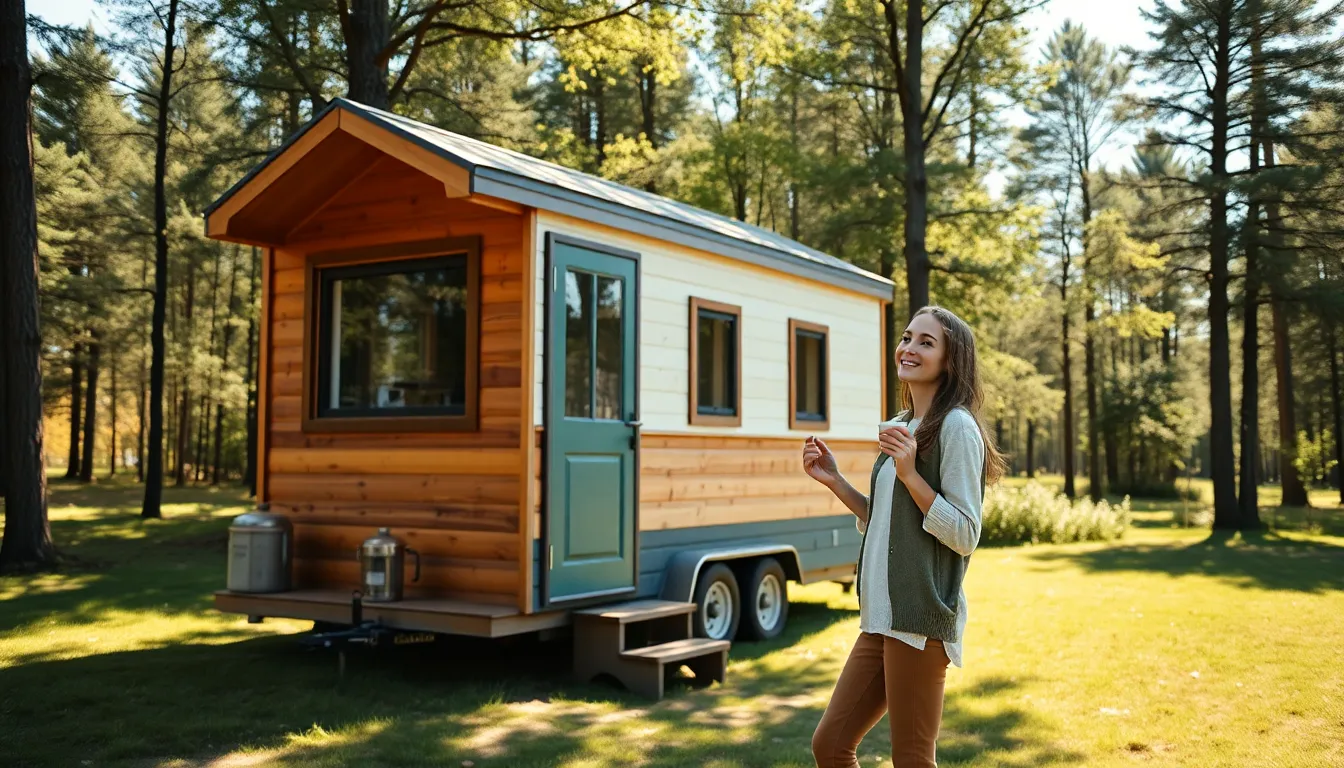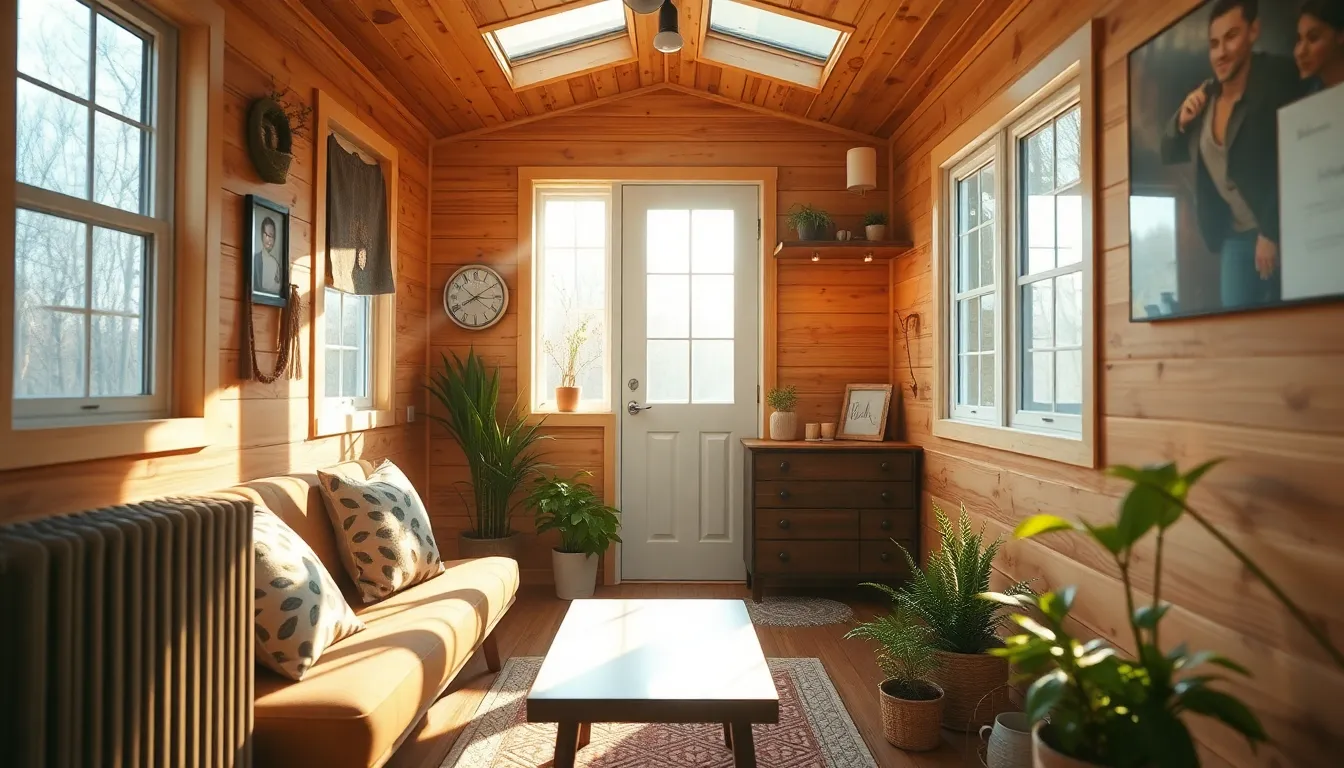Imagine stepping into a room where the scent of aged paper dances with the aroma of freshly brewed coffee. A home library isn’t just a collection of books; it’s a sanctuary for the mind, a cozy retreat for bookworms and casual readers alike. Whether it’s a sleek modern setup or a charming vintage nook, the right home library style can transform any space into a literary haven.
With the perfect blend of aesthetics and functionality, a well-designed library invites creativity and relaxation. Picture plush seating, warm lighting, and shelves bursting with stories waiting to be discovered. It’s not just about the books; it’s about creating an atmosphere that inspires. So grab your favorite novel and let’s dive into the delightful world of home library styles that’ll make your reading corner the envy of all your friends.
Table of Contents
ToggleOverview of Home Library Style
Home libraries serve as more than mere collections of books; they embody personal sanctuaries for readers. Such spaces can reflect a variety of styles, allowing customization that fits individual tastes. Modern designs emphasize clean lines and minimalist furniture, creating a sleek and uncluttered environment. Vintage aesthetics embrace warmth through wooden bookshelves and antique furnishings, fostering a sense of nostalgia.
Incorporating functional elements enhances comfort and usability. Cozy seating options invite long reading sessions, while strategically placed lighting sets the mood. Utilizing natural light can further elevate the atmosphere, connecting the indoor space with the outdoors.
Shelving plays a critical role in home library design. Open shelving encourages accessibility and displays books as art, while closed cabinetry keeps the space organized and tidy. Accessories like bookends, decorative items, and plants can add personality and character to the library.
Color palettes vary greatly, influencing the overall ambiance. Soft, neutral tones promote tranquility, while bold colors can energize and inspire creativity. Textures contribute depth and interest as well, with plush rugs and fabric-covered seating enhancing the tactile experience.
Ultimately, each home library style must balance aesthetics and functionality. It’s crucial for readers to envision their ideal setting, as this envisioning process can drive successful design choices. Exploring different styles leads to personalized spaces that truly reflect identity and passion for reading.
Popular Home Library Styles
Exploring various home library styles reveals unique features that enhance the reading experience. Each style offers distinct elements that reflect personal tastes and preferences.
Modern Home Library
Modern home libraries showcase sleek designs. Clean lines create an uncluttered feel, making the space visually appealing. Minimalist furniture often serves as both functional and aesthetic, providing ample seating and surface areas. Neutral color palettes emphasize simplicity, while integrated technology allows for convenience. Natural light plays a significant role, brightening spaces and connecting indoor and outdoor environments. Streamlined shelving units ensure easy access to books while maintaining organization.
Traditional Home Library
Traditional home libraries exude warmth and character. Rich wood tones dominate, creating a cozy atmosphere ideal for reading. Classic furnishings, such as plush armchairs and sturdy wooden desks, contribute to a sophisticated look. Ornate moldings and decorative elements add charm, reflecting timeless design principles. Heavy drapery often frames windows, allowing for controlled lighting and privacy. These libraries encourage visitors to settle in, fostering an inviting environment.
Vintage Home Library
Vintage home libraries evoke nostalgia through eclectic decor. Antique bookshelves filled with worn books lend character to the space. Soft, warm lighting creates an intimate atmosphere, inviting readers to linger. Vintage accessories, such as ornate bookends and decorative globes, enhance the overall aesthetic. Mismatched furniture often adds a personal touch, making each library unique. This style encourages creativity, blending old-world charm with modern comforts.
Key Elements of Home Library Design
Home libraries combine aesthetics with functionality to create personalized sanctuaries. Key design elements significantly enhance the reading experience.
Furniture and Shelving
Select furniture that provides comfort and support. Options include cozy armchairs, plush sofas, and multifunctional ottomans. Shelving needs careful consideration; open shelving keeps books accessible, while closed cabinetry maintains a tidy appearance. Bookshelves should fit the room’s dimensions, maximizing space without feeling cramped. Consider including a small reading desk for added versatility. Both contemporary and vintage styles can complement the overall theme.
Lighting and Ambiance
Lighting influences mood within a home library. A mix of ambient and task lighting caters to different needs. Use floor lamps for reading and wall sconces for soft background light. Natural light enhances the connection to the outside, promoting a vibrant atmosphere. Utilize window treatments that allow control over glare while providing warmth. Incorporating dimmable lights ensures flexibility for various times of day.
Color Schemes and Decor
Color schemes set the tone of the space. Warmer tones like deep reds, browns, and greys create a cozy environment, while cooler hues evoke a modern feel. Decor should enhance personal expression; consider using art pieces or photographs that resonate with the reader. Textures can add depth, so mix materials like wood, fabric, and metal. Integrating plants brings life to the space and improves air quality, fostering a healthy reading environment.
Practical Tips for Creating Your Home Library
Creating a home library requires careful planning and creativity to ensure it serves both functional and aesthetic purposes. Consider the following aspects to achieve the perfect reading sanctuary.
Space Considerations
Determine the available space in the home. Utilize corners, nooks, or underutilized areas to maximize square footage. Ensure the library is easily accessible from other living spaces for convenience. Choose a room with natural light to enhance the atmosphere, fostering a cozy, inviting environment. Plan flexible layouts to accommodate future changes, ensuring the library evolves with personal preferences.
Book Organization Methods
Establish an effective organization system for books. Group by genre, author, or color to create a visually appealing display. Use decorative baskets or boxes for added style and functionality. Implement a label system for easier navigation, especially in larger collections. Rotate and refresh books periodically to maintain interest and encourage exploration, keeping the reading experience dynamic and engaging.
Conclusion
Creating a home library is an exciting journey that allows individuals to express their love for reading while crafting a personal sanctuary. Whether one opts for a modern sleek design or a vintage cozy vibe the possibilities are endless. Thoughtful planning and attention to detail can transform any space into a haven for literary exploration.
By balancing aesthetics with functionality readers can curate an environment that inspires and invites. Incorporating elements like comfortable seating strategic lighting and unique decor will enhance the overall experience. Ultimately a well-designed home library not only reflects personal tastes but also fosters a deeper connection to the written word. Embrace the opportunity to design a space that truly resonates with one’s passion for books.

